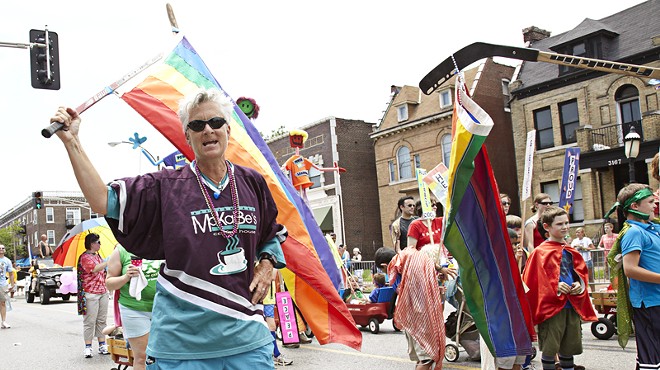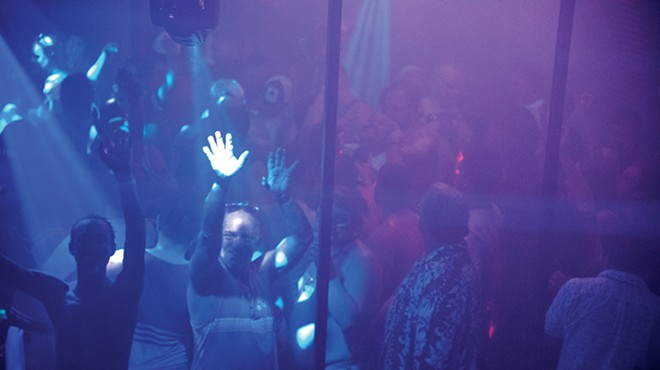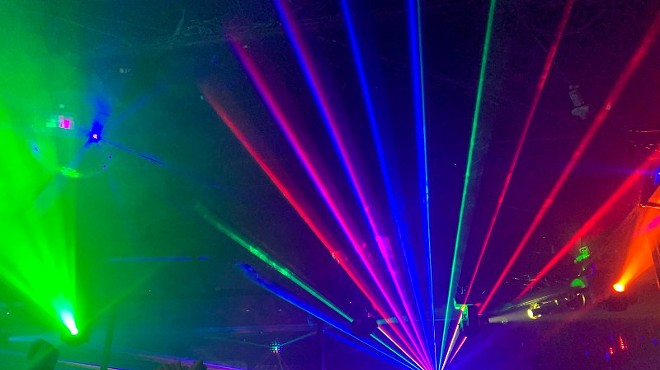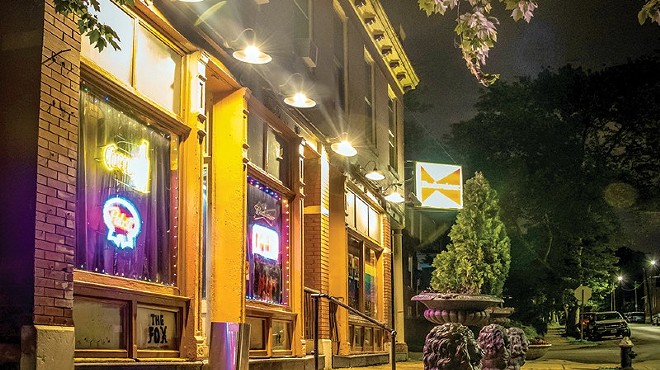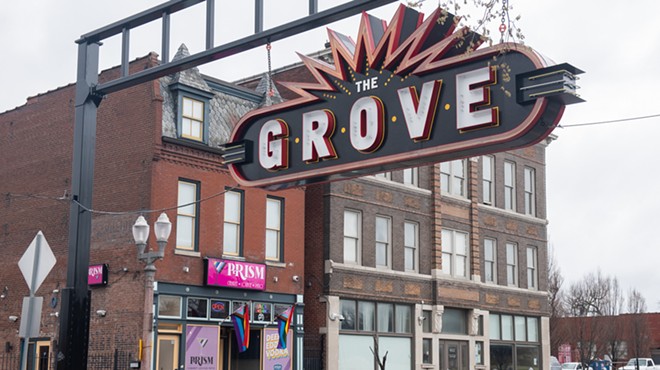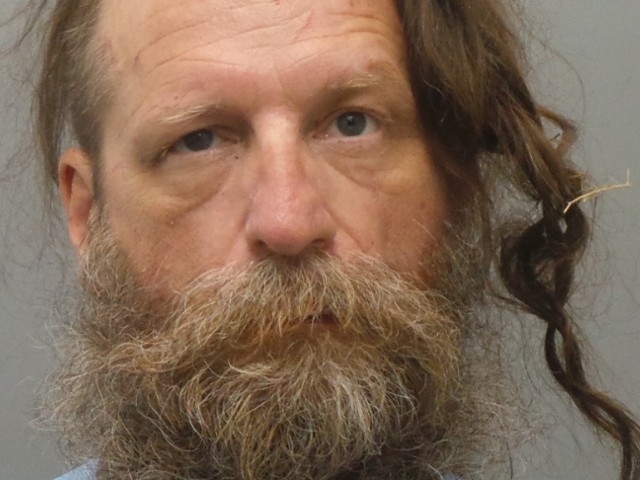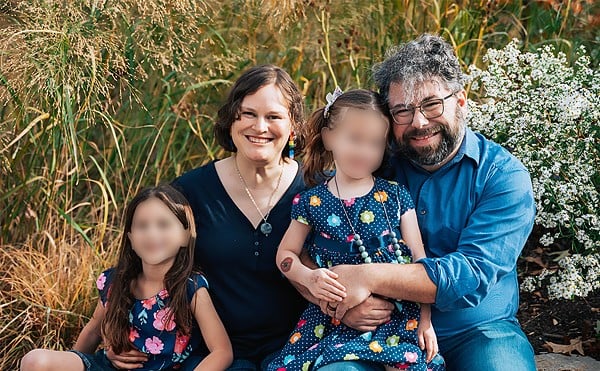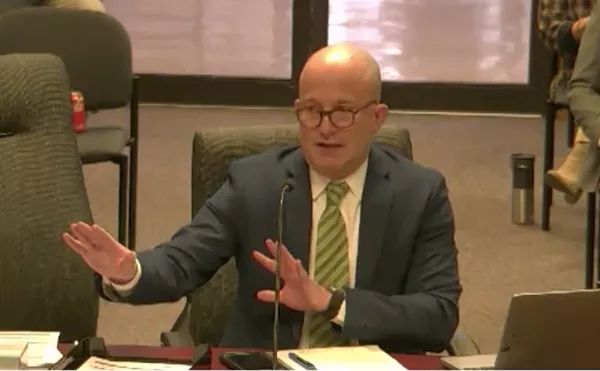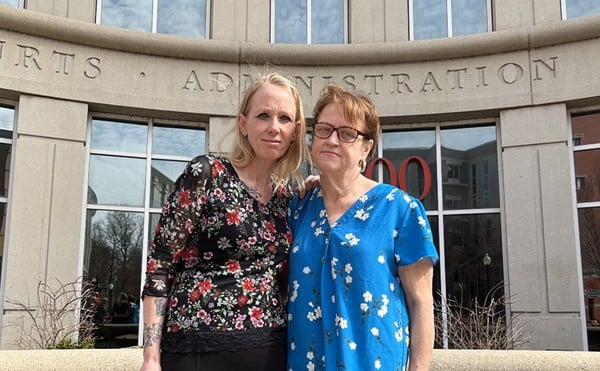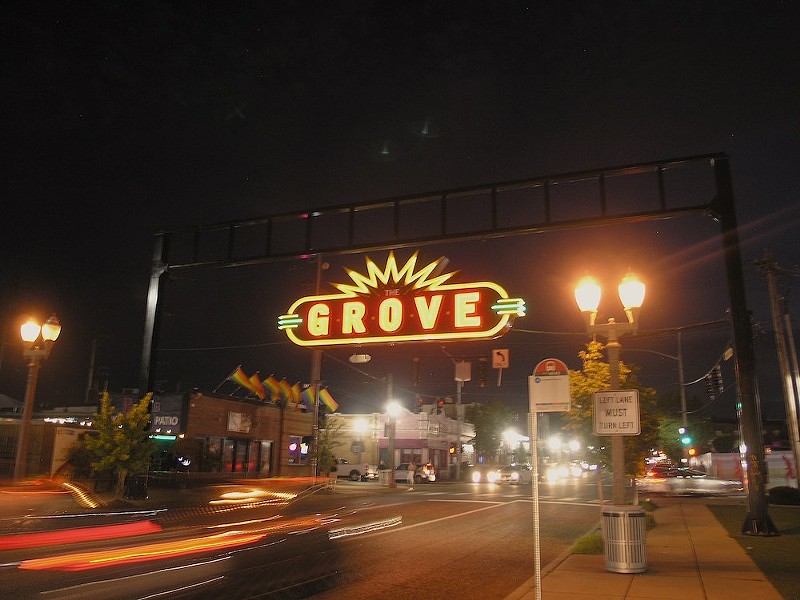
Ania Cunningham learned about the Grove a little bit earlier than she should have.
"This might sound bad, but I used to run down here and underage drink during GroveFest," she says.
Cunningham, now 31, has worked in the Grove, a stretch of Manchester Avenue between Kingshighway and Vandeventer in the Forest Park Southeast neighborhood, since she was 20.
In the past, when Cunningham got off of work at 1:30 a.m., she would bar-hop down the strip.
"I would pop out and pop everywhere," she says.
But she doesn't do that so much anymore.
It's a cool Wednesday afternoon in May, and Cunningham is slinging drinks behind the bar at Layla, a burger and shawarma joint in the heart of the Grove.
A bartender in drag makeup serves a guy in a Blues jersey, and an expansive rainbow flag is stretched across the street-facing window. The kitchen is closed for the day, but customers can wander to a food truck right outside the restaurant. It looks like a microcosm of the neighborhood, or of what it once was.
Cunningham has noticed changes in the Grove.
"I feel like this was the gayborhood," Cunningham says. "And not to say that it's not — but it's just, it's not feeling like that anymore as much as it did when I was younger."
Fewer gay bars line the strip than in the Grove's heyday. Housing prices are increasing more rapidly here than in the city as a whole. And the neighborhood is less diverse than it was 10 years ago.
It's not just the Grove: Gayborhoods across the country are changing. Supporters of the Castro in San Francisco say LGBTQ individuals are leaving the neighborhood while straight families are moving in. In Chicago, one scholar says the future of Northalsted, formerly known as Boystown, is uncertain.
But Amin Ghaziani, a professor of sociology at the University of British Columbia who has written about trends in American gayborhoods, tells the Riverfront Times that referring to neighborhoods like the Grove as "declining," "disappearing" or "dying" might be a mistake.
"Instead, I prefer to think that their significance is changing,'' he says. "And it makes sense for us to ask why."
To Ghaziani, gayborhoods are not important for any one particular reason.
"I think the reason why gayborhoods are important is that they don't offer any singular or static thing," he says. "The offerings of a gay district evolve as the circumstances in which we live and find ourselves evolve."
The neighborhoods started forming after World War II, according to Ghaziani, allowing LGBTQ people the opportunity to congregate and build communities. But by the late 1960s with the arrival of New Left activism — a progressive political movement to achieve things like gay rights — the offerings of gayborhoods had evolved.
"They provided crucibles for the cultivation of political protest and political consciousness," he says.
After the 1970s, the neighborhoods continued on a political trajectory, hosting voting drives and cultural celebrations like Pride parades, according to Ghaziani.
Steven Louis Brawley likes to think of the neighborhoods as places where LGBTQ people can live, work and play.
Since 2007, Brawley has recorded queer and trans history in St. Louis through the St. Louis LGBT History Project. He started the project as an effort to document an oral history that was starting to disappear.
"I came out in '87, I guess, into the gay-bar scene in St. Louis, and I would meet these people, and they would tell me these great stories that I would be fascinated by," he says. "But sadly, over time, folks started passing away, and I realized that nobody was reporting these stories."
The project paints a comprehensive picture of the city's LGBTQ history from the 1950s onward. It includes stories from the city's various gayborhoods.
Throughout St. Louis' history, other neighborhoods — not just the Grove — served as gay villages. Ghaziani says there's often more than just one pocket of a city where LGBTQ people gather.
"It doesn't make sense anymore to think about 'the gayborhood' as a singular thing," he says. "I think instead we're moving toward a model of 'gayborhoods, plural.'"
In St. Louis, LGBTQ people found those pockets in neighborhoods like Soulard and Lafayette Square. In the 1960s, Brawley says the Central West End emerged as one of those places where community members could do all three: live, work and play.
"It wasn't just [that you] went there to party, but you had shops there, you worked there," he says. "You live[d] in the neighborhood."
In the 1990s, a few gay bars started to pop up in the Grove.
"These bars weren't your trendy A-list bars," Brawley says.
But as Washington University started investing in the area near its medical campus in the 1990s, the Grove benefited. The rehabilitation of Forest Park Southeast brought new apartment buildings to the neighborhood and more customers to the bars.
"Basically Novak's Bar was booming, and Attitudes was booming, and Rainbow's End and Freddie's, they were booming," Brawley says. "They were very profitable bars."
Related
In 2006, Serge Patel discovered the Grove and its nightlife after moving to St. Louis from Canada. At bars like Novak's and Just John's, he says he met all kinds of people.
"This was one of the neighborhoods I liked, because it was inviting and accepting," he says. "Compared to other parts of the city, I just felt more inclusive and safe here."
But the bars Brawley mentioned as thriving in the 1990s are now closed. Longtime gay bar Attitudes closed during the COVID-19 pandemic after 32 years of business, and the pink paint that wraps around the seemingly vacant building's exterior is starting to fade away. Novak's closed in 2013 after its controversial owner and St. Louis LGBTQ pioneer Nancy Novak retired.
"We only have, what, three bars now," Brawley says.
Just John's and Rehab still stand strong on the strip. A new LGBTQ bar, Prism, takes the spot of the Monocle, a gay bar that closed in 2020.
But, for many, the bars feel different than they did in the 1990s and 2000s.
In 2010, Patel started to notice a greater mix of people bar-hopping in the Grove. He says there was an influx of Saint Louis University and Wash U students — among others — at the bars, and the energy in the neighborhood shifted.
"You go in any of these bars, anytime, and you see a mixed blend of people, either gay folks with their friends or straight allies," Brawley says. Another resident, Tommy Espenschied, grew up in Brentwood and just moved to the neighborhood in the past few months. His gay brother introduced him to the neighborhood and bars like Just John's during his late teens. But today, he says he doesn't often think about the Grove as an LGBTQ community.
"Growing up, I did always know it was a gayborhood," he says. "Like I definitely know that identity of the neighbor of course, and I embrace that part of the identity."
Ghaziani says there are many reasons gayborhoods are changing, but three most often get talked about: gentrification, changing attitudes toward LGBTQ people and technology.
In cities across the country, rapidly increasing real-estate values in gayborhoods are pushing out LGBTQ folks.
In Forest Park Southeast, the median sale price jumped by nearly 190 percent in the last five years, from $169,500 in April 2017, to $490,500 in April of this year, according to Redfin data. In the same period, the median sale price in St. Louis city only increased by 39.3 percent.
As a result, the neighborhood is becoming increasingly homogenous. According to census data from St. Louis city, white people made up 46.2 percent of Forest Park Southeast's population in 2020, compared to 30.1 percent in 2010, and just 18.4 percent in 2000. In the same 20-year period, the Black population in the neighborhood shrunk by 53.8 percent.
The same thing happened in other areas of the city, Brawley says. LGBTQ people were essential to rehabilitation efforts in the Central West End. In Lafayette Square, he says they helped restore the Victorian townhouses which adorn the neighborhood. But after reviving the neighborhoods, gentrification priced many LGBTQ folks out of the areas, he says.
Cunningham isn't seeing some of the people she used to run into.
"I feel like the people that built it up to begin with, or that were here even five years ago, aren't here anymore because they can't afford to be," she says.
Improving attitudes toward queer people have also changed the fabric of gayborhoods, according to Ghaziani.
Unfortunately, attitudes toward transgender people are changing for the worse: According to Gallup, 5 percent fewer people in the U.S. supported transgender people serving in the military in 2021 compared to 2019. But Gallup also reports that 70 percent of people in the U.S. support same-sex marriage in 2021, compared to just 27 percent in 1996.
The shift has resulted in straight people becoming more comfortable living in gayborhoods and LGBTQ people feeling safer living in other parts of the city.
Brawley says he lived in the Central West End for 15 years and loved it. Now, though, he lives in Kirkwood.
"As I got older, I just needed a different change of pace," he says.
Ghaziani says the arrival of new social networks like Grindr has allowed LGBTQ people to connect with others outside of physical spaces like gay bars centered in gayborhoods. Grindr is a geosocial dating app for gay, bi, trans and queer people that allows users to connect with others nearby.
Brawley says young people tell him that they get burned out on those dating apps and would have liked to experience a neighborhood like the Grove in its heyday. But back then, according to Brawley, queer displays in public could be dangerous. "You didn't hold hands in the West End or Soulard," he says. "You had to be careful and watch your surroundings. It just was a different time."
The LGBTQ community feeling less pressure to live in gayborhoods presents an interesting conundrum. "Is it good for the community to try to find a place where a lot of people can be together?" Brawley asks. "Or is it good that we can live anywhere we want and not face as much discrimination? We still face discrimination that's still there."
Safe neighborhoods may be increasing in importance. In Missouri and elsewhere, new legislative moves threaten trans rights, and in Florida, a new "Don't Say Gay" bill constrains instruction on gender and sexuality. No time was the importance of gayborhoods more pronounced than in 2016 after the Pulse nightclub shooting.
"I would say, despite declarations about the changing resonance of gay neighborhoods, a fantastic contemporary example which points to their staying power and resonance is the fact that shortly after the shootings at the Pulse nightclub in Florida, a lot of people congregated in gay neighborhoods across the country to hold candlelight vigils," Ghaziani says.
That happened in the Grove, too.
Brawley says St. Louis' gayborhoods of the future are bound to look different.
"I just think the days of the old gayborhoods may be gone forever, in terms of what they used to be," he says. "And that's OK." Community, after all, can be made anywhere.

